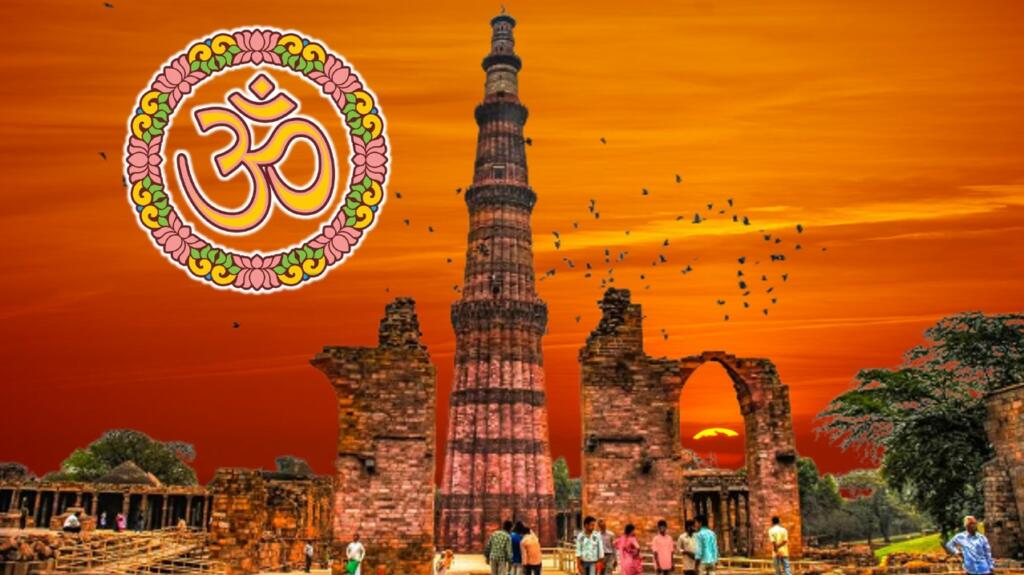The Ram Janmabhoomi dispute was resolved in 2019 and a centuries-old injustice was corrected. The verdict also opened the doors for Hindus to reclaim other temples, which have historically borne the brunt of Islamic invasions and the destructive supremacy of foreign rulers. After Ram Mandir at Ayodhya and Kashi Vishwanath Mandir at Varanasi, it is Dhruv Stambh that needs to be restored as it has all the signs of a Hindu temple, contrary to what some historians would have us believe.
Qutub Minar or Dhruv Stambh?
The Qutub Minar complex is claimed to be first made by Qutb-ud-din Aibak, the first ruler of the Slave Dynasty, and was added to by many subsequent rulers. According to historical sources, the Quwwat al-Islam mosque was built in 1192. Inscriptions record that 27 Jain and Hindu temples were torn down for its creation. Pillars from the destroyed temples were reused and the Hindu images were plastered over with geometric designs.
‘Qutub Minar’ means ‘victory pillar’, and the central Mosque inside Qutub Minar is known as ‘Quwwat Ul Islam’, which translates to ‘Power of Islam’, indicating the victory of Islam over Idol worshipping Hindus.
Proof that Qutub complex was actually Dhruv Stambh:
KK Mohammed, the archaeologist who gave an opinion a temple had existed under the Babri masjid, had once claimed at a public meeting that no temple existed on the Qutub complex site. Let’s take a look.
The tower resembles a 24-petalled lotus flower with each petal representing a “HORA”, i.e., an hour. Vertical projection lines from the midpoints of stone-flutings on the top of each floor of the tower to the horizontal plane at its base also forms a lotus flower. The 24-petalled architectural lotus flower is purely a Hindu concept as lotuses do not grow in the dry and arid lands of the islamic invaders.
Stones extricated from Qutub Complex have Hindu images on one side and Arabic calligraphy on the other. However, the stones have now been moved to the Museum and this clearly depicts that the invaders used to eliminate the stone-dressing of Hindu buildings and change the physical features by inscribing Arabic lettering on the new frontage.
Interestingly, the tower is part of the surrounding structures and there existed the temples around it. So, how did Qutb-ud-din find a space between them to build the mosque?
The Sanskrit inscription in Brahmi script on the non-rusting iron pillar vindicates the existence of Vishnupad Giri. In addition to that, the seventh storey of the complex actually had a statue built of Brahma holding the Vedas at the beginning of creation.
Earlier as reported by TFI, a case had been filed last year in Delhi’s Saket court, on behalf of Lord Vishnu and Lord Rishabhdev to reclaim Dhruv Stambh, the original structure. The petitioners had pleaded that the central government forms a trust, which will restore the deities in the Qutab Minar complex and organise and administer their worship. The petitioners had also prayed that government and ASI should be prevented from interfering in worship, repair, and construction of the temple in the complex.
The evidence is already out in the open. There is no denying the fact that the complex at one point in time used to be a Hindu structure. The government and the ASI should look at the overwhelming evidence and restore the Dhruv Stambh to its former glory.
